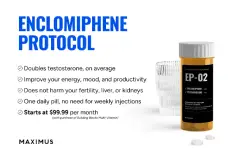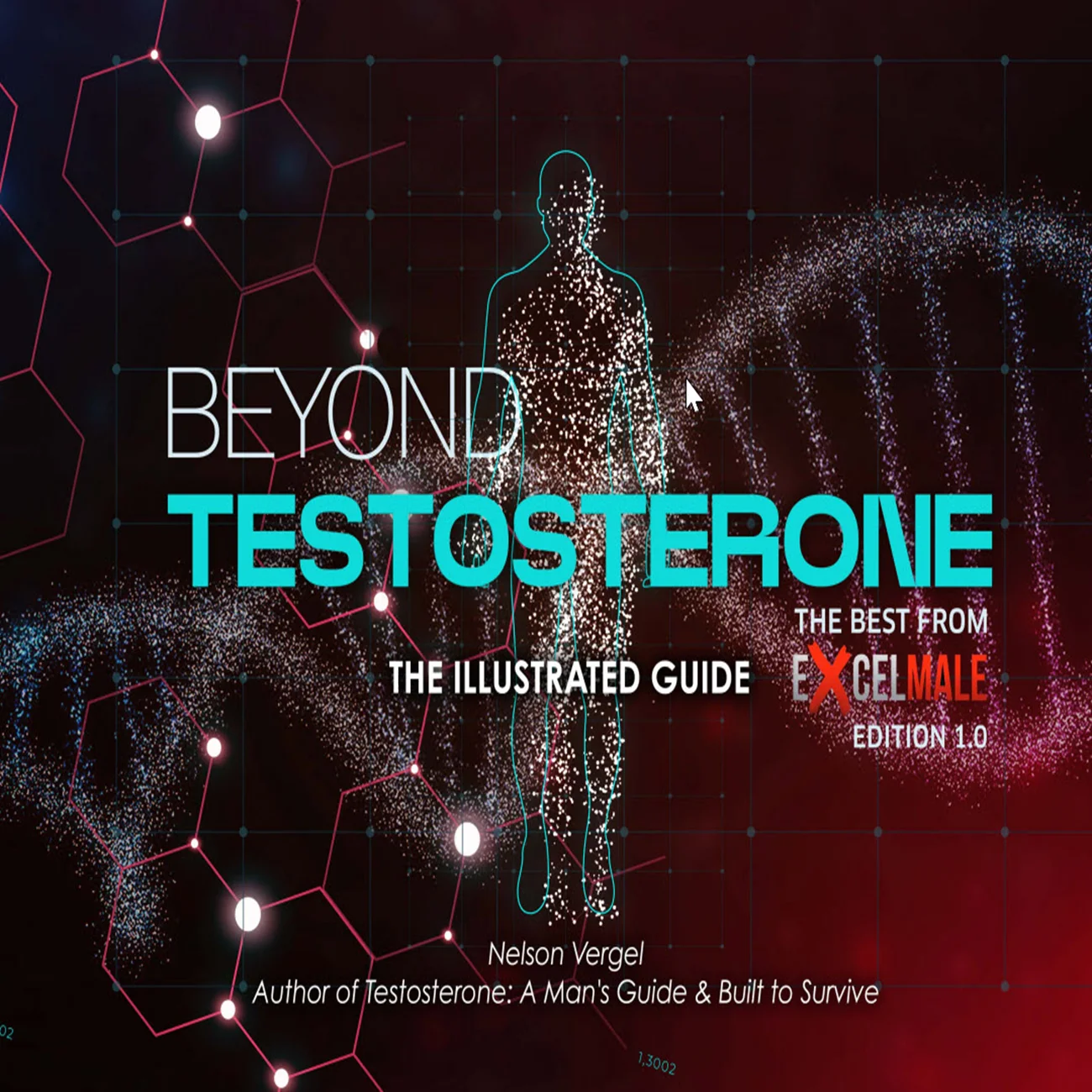madman
Super Moderator
MSACL 2025 Abstract
Leslie Farris, Sarah Zilka, Katie Troike, Jena Talbot, Richard Giles, Drew Payto, Jessica M Colón-Franco
Department of Laboratory Medicine, Cleveland Clinic Foundation, Cleveland, OH, USA
Abstract
OBJECTIVE(S)
To develop and validate a single LC-MS/MS method for the analysis of direct free and total testosterone suitable for clinical use in females, children and males.
METHODS
Free testosterone was isolated from the bound fractions through equilibrium dialysis (ED) using the Thermo Scientific RED Device and HEPES buffer. Serum and HEPES buffer were added to their respective chambers (1:1.8 ratio) and incubated at 37 °C with gentle mixing for 8 hours. Dialysates containing free testosterone and serum samples containing total testosterone were extracted along with a C-13 labeled internal standard in an identical supported liquid extraction (SLE) procedure using modified sample and dilution volumes. Dialysates (300 µL) or serum (200 µL) samples were added to a 96-well plate with 20 µL of internal standard, briefly mixed, then allowed to equilibrate/acclimate for 10 minutes. Internal standard spiked dialysates and serum were diluted with water to a final volume of 400 µL and mixed. The diluted samples were immediately loaded onto the SLE media using positive pressure and allowed to absorb for at least 5 minutes, and extracted with three elutions of (9:1, hexane:ethyl acetate) into a glass-coated collection plate, evaporated to dryness, reconstituted in 60% methanol (200 µL for total and 125 µL for free testosterone), and mixed. Samples were analyzed by injecting 50 µL of extract on a Transcend II LX-2 LC with a C18 100×3 mm, 2.6 µm analytical column (40 °C) coupled to a TSQ Altis™ triple quadrupole mass spectrometer (Thermo Scientific). The mobile phase A and B consisted of 0.2 mM ammonium fluoride in LCMS grade water and LCMS grade (7:3, methanol:acetonitrile), respectively, with a flow rate of 0.5 mL/min over a runtime of 7 minutes (5 minutes multiplexed, two channels). The performance characteristics of the methods for free and total testosterone were evaluated according to CLSI C-62, including: matrix effect, accuracy, precision, linearity, sensitivity, specificity/selectivity, carryover, and stability.
RESULTS
The alternative matrix (Golden West Diagnostics, LLC, Mass Spect Gold Human Serum, Ultra-Low Testosterone, Lipid Free, MSG3100) was found suitable for use as calibrator matrix (bias range -0.7 to 4.4%, overall mean bias 2.6% when mixed with patient specimens). No ion suppression or enhancement near the retention time of testosterone was observed for either assay. No interferences were observed for hemolyzed, lipemic, or icteric specimens. The assay specificity was evaluated using commercial interference mixes (40+ potential interferents) and individual isobaric compounds (androstenedione, DHEA, epitestosterone, and estriol). We identified two potential interferences from the interference mixes: bupivacaine, which is isobaric with testosterone, and sertraline, an antidepressant that belongs to the class of selective serotonin reuptake inhibitors (SSRIs). However, the concentration of sertraline in the interference mix is approximately 50-300 times the efficacious dose. The methods were linear in the analytical measurement ranges of 0.10-200 ng/dL for free testosterone, and 1.0-2000 ng/dL for total testosterone. To evaluate the analytical sensitivity of the method, the limit of detection (LOD), limit of blank (LOB), and lower limit of quantitation (LLOQ) were determined for each analyte. For free testosterone, the LOD was 0.02 ng/dL, the LOB was 0.00 ng/dL, and the LLOQ was 0.12 ng/dL (12.4% CV). For total testosterone, the LOD was 0.2 ng/dL, the LOB was 0.0 ng/dL, and the LLOQ was 1.0 ng/dL (5.7% CV). The sample stability for both free and total testosterone was determined to be 3, 14, and 60 days at ambient, refrigerated, and frozen conditions respectively. Acceptable carryover were found for free testosterone at 0.026 and 0.010 ng/dL and total testosterone at 0.08 and 0.10 ng/dL, with each assay evaluated over two channels at concentrations twice the upper limit of the analytical measurement range. For free testosterone, the intra-day precision CV ranged from 3.2% to 8.8% and the inter-day precision CV ranged from 2.8% to 19.0%. For total testosterone, the intra-day precision CV ranged from 1.9% to 2.4% and the inter-day precision CV ranged from 2.7% to 3.0%. Comparison with independent reference laboratory LC-MS/MS and ED methods showed an average bias of 10.2% for free testosterone (9.8% bias in the subrange 0.1-10.0 ng/dL) and 3% for total testosterone. Deming regression analysis indicated a slope of 1.184 and intercept of -0.220 (R=0.9362) for free testosterone, and a slope of 1.025 and intercept of 0.54 (R= 0.9959) for total testosterone.
CONCLUSION
We described an LC-MS/MS method for the quantitation of direct free and total testosterone in serum from females, children and males. Despite the analytical challenges associated with the measurement of direct free and total testosterone across the wide analytical measurement range required for a universal clinical method, our method demonstrated robust analytical performance for clinical use in diverse patient populations. Coupled with a short ED of 8 hours for free testosterone, these methods are well-suited for routine use in a clinical laboratory. The streamlined workflow supports in-house testing, decreasing test cost and turnaround time for patients undergoing biochemical workup for altered levels of total and biologically active testosterone.
Leslie Farris, Sarah Zilka, Katie Troike, Jena Talbot, Richard Giles, Drew Payto, Jessica M Colón-Franco
Department of Laboratory Medicine, Cleveland Clinic Foundation, Cleveland, OH, USA
Abstract
OBJECTIVE(S)
To develop and validate a single LC-MS/MS method for the analysis of direct free and total testosterone suitable for clinical use in females, children and males.
METHODS
Free testosterone was isolated from the bound fractions through equilibrium dialysis (ED) using the Thermo Scientific RED Device and HEPES buffer. Serum and HEPES buffer were added to their respective chambers (1:1.8 ratio) and incubated at 37 °C with gentle mixing for 8 hours. Dialysates containing free testosterone and serum samples containing total testosterone were extracted along with a C-13 labeled internal standard in an identical supported liquid extraction (SLE) procedure using modified sample and dilution volumes. Dialysates (300 µL) or serum (200 µL) samples were added to a 96-well plate with 20 µL of internal standard, briefly mixed, then allowed to equilibrate/acclimate for 10 minutes. Internal standard spiked dialysates and serum were diluted with water to a final volume of 400 µL and mixed. The diluted samples were immediately loaded onto the SLE media using positive pressure and allowed to absorb for at least 5 minutes, and extracted with three elutions of (9:1, hexane:ethyl acetate) into a glass-coated collection plate, evaporated to dryness, reconstituted in 60% methanol (200 µL for total and 125 µL for free testosterone), and mixed. Samples were analyzed by injecting 50 µL of extract on a Transcend II LX-2 LC with a C18 100×3 mm, 2.6 µm analytical column (40 °C) coupled to a TSQ Altis™ triple quadrupole mass spectrometer (Thermo Scientific). The mobile phase A and B consisted of 0.2 mM ammonium fluoride in LCMS grade water and LCMS grade (7:3, methanol:acetonitrile), respectively, with a flow rate of 0.5 mL/min over a runtime of 7 minutes (5 minutes multiplexed, two channels). The performance characteristics of the methods for free and total testosterone were evaluated according to CLSI C-62, including: matrix effect, accuracy, precision, linearity, sensitivity, specificity/selectivity, carryover, and stability.
RESULTS
The alternative matrix (Golden West Diagnostics, LLC, Mass Spect Gold Human Serum, Ultra-Low Testosterone, Lipid Free, MSG3100) was found suitable for use as calibrator matrix (bias range -0.7 to 4.4%, overall mean bias 2.6% when mixed with patient specimens). No ion suppression or enhancement near the retention time of testosterone was observed for either assay. No interferences were observed for hemolyzed, lipemic, or icteric specimens. The assay specificity was evaluated using commercial interference mixes (40+ potential interferents) and individual isobaric compounds (androstenedione, DHEA, epitestosterone, and estriol). We identified two potential interferences from the interference mixes: bupivacaine, which is isobaric with testosterone, and sertraline, an antidepressant that belongs to the class of selective serotonin reuptake inhibitors (SSRIs). However, the concentration of sertraline in the interference mix is approximately 50-300 times the efficacious dose. The methods were linear in the analytical measurement ranges of 0.10-200 ng/dL for free testosterone, and 1.0-2000 ng/dL for total testosterone. To evaluate the analytical sensitivity of the method, the limit of detection (LOD), limit of blank (LOB), and lower limit of quantitation (LLOQ) were determined for each analyte. For free testosterone, the LOD was 0.02 ng/dL, the LOB was 0.00 ng/dL, and the LLOQ was 0.12 ng/dL (12.4% CV). For total testosterone, the LOD was 0.2 ng/dL, the LOB was 0.0 ng/dL, and the LLOQ was 1.0 ng/dL (5.7% CV). The sample stability for both free and total testosterone was determined to be 3, 14, and 60 days at ambient, refrigerated, and frozen conditions respectively. Acceptable carryover were found for free testosterone at 0.026 and 0.010 ng/dL and total testosterone at 0.08 and 0.10 ng/dL, with each assay evaluated over two channels at concentrations twice the upper limit of the analytical measurement range. For free testosterone, the intra-day precision CV ranged from 3.2% to 8.8% and the inter-day precision CV ranged from 2.8% to 19.0%. For total testosterone, the intra-day precision CV ranged from 1.9% to 2.4% and the inter-day precision CV ranged from 2.7% to 3.0%. Comparison with independent reference laboratory LC-MS/MS and ED methods showed an average bias of 10.2% for free testosterone (9.8% bias in the subrange 0.1-10.0 ng/dL) and 3% for total testosterone. Deming regression analysis indicated a slope of 1.184 and intercept of -0.220 (R=0.9362) for free testosterone, and a slope of 1.025 and intercept of 0.54 (R= 0.9959) for total testosterone.
CONCLUSION
We described an LC-MS/MS method for the quantitation of direct free and total testosterone in serum from females, children and males. Despite the analytical challenges associated with the measurement of direct free and total testosterone across the wide analytical measurement range required for a universal clinical method, our method demonstrated robust analytical performance for clinical use in diverse patient populations. Coupled with a short ED of 8 hours for free testosterone, these methods are well-suited for routine use in a clinical laboratory. The streamlined workflow supports in-house testing, decreasing test cost and turnaround time for patients undergoing biochemical workup for altered levels of total and biologically active testosterone.












